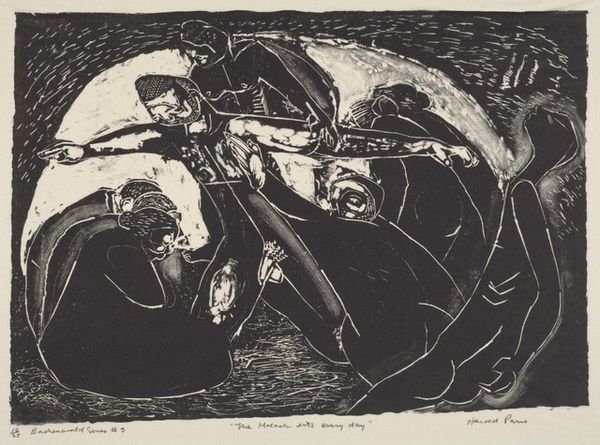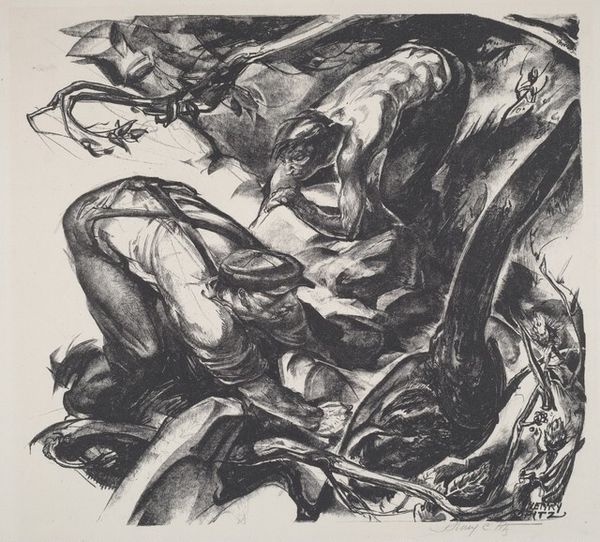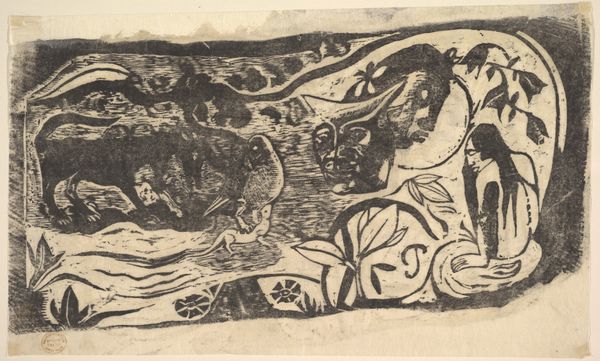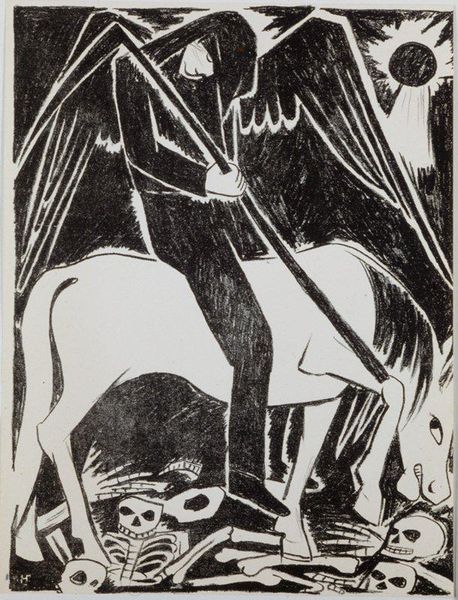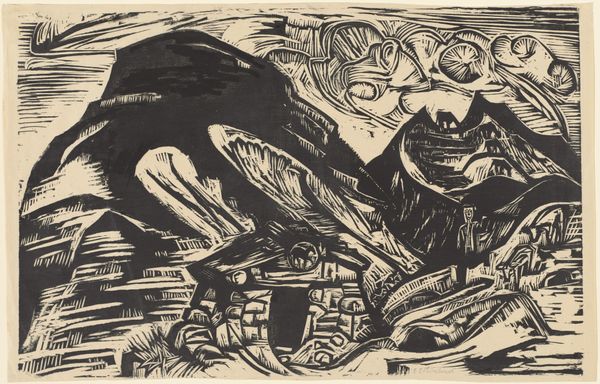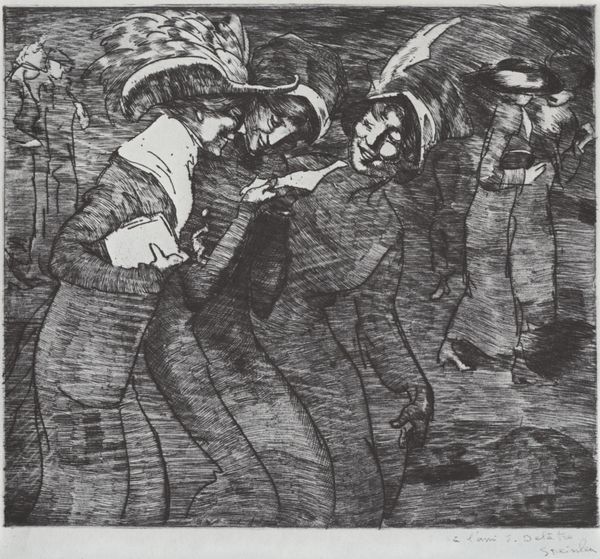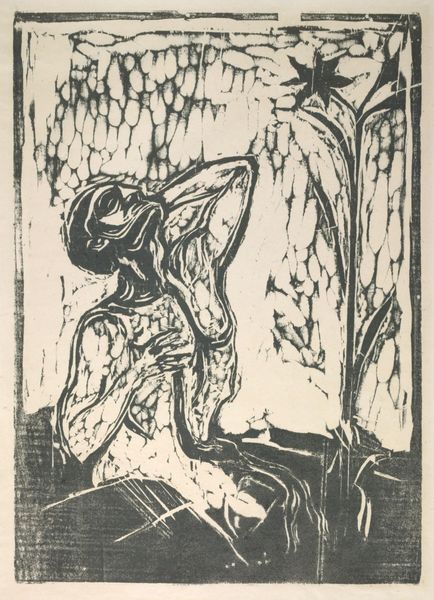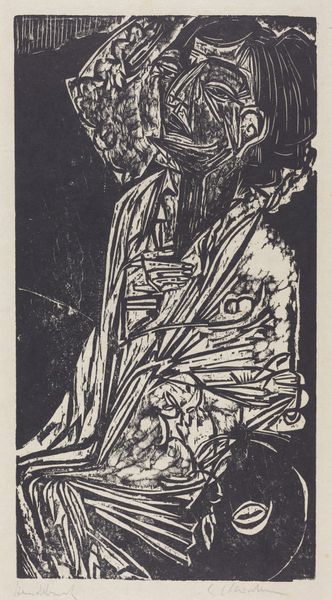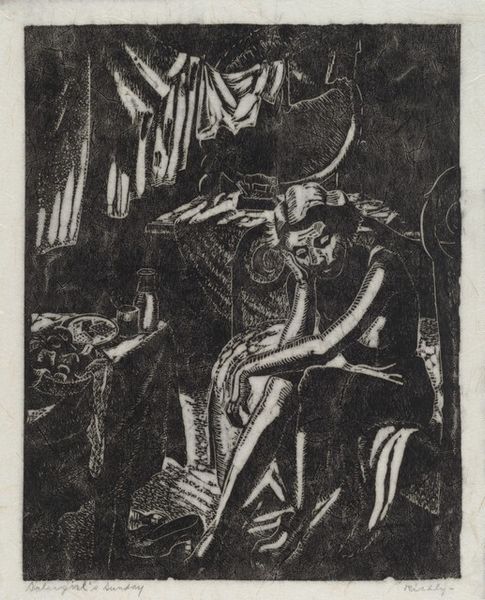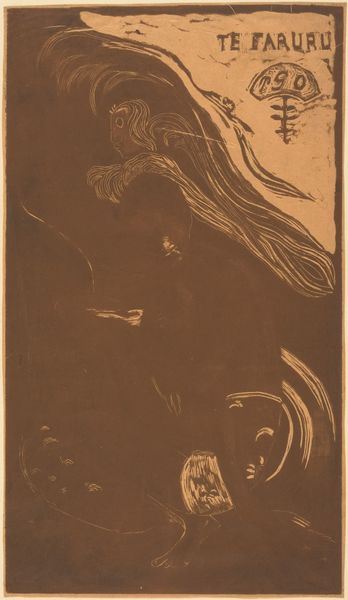
Dimensions: Image: 240 x 344 mm Sheet: 356 x 508 mm
Copyright: National Gallery of Art: CC0 1.0
Curator: The chilling starkness of this engraving, “The Moloch Eats Every Day,” by Harold Persico Paris from around the 1940s, really grabs you. It's powerful, isn’t it? Editor: Intensely so. My immediate response is one of claustrophobia—a sense of being trapped, almost consumed by something. It's the deep blacks and the compression of figures that create such an overwhelming feeling. Curator: The title suggests something insatiable, relentless. When considering its social context, immediately after the great depression, and during the second world war, it becomes clearer that this print isn't merely depicting struggle; it critiques a system. I’m compelled to explore the work's means of production – how such weighty emotion is carved into a block and pressed to paper for mass circulation. Editor: Exactly, and that’s where the layers deepen for me. Who is the Moloch in this narrative? Is it capitalism, war, or some confluence of oppressive systems devouring the vulnerable? The figures, are they symbols for identity groups targeted by that system? What power dynamic between men and women is established? It encourages that dialogue between lived experience and art. Curator: Absolutely. The heavy linework creates bold contrasts that serve a direct communication style, a visual shorthand for conveying societal grievances to a wider audience through printmaking, therefore acting as an affordable tool for critical dialogue. The composition feels intentionally raw. Editor: Rawness that lends itself to its emotional potency. We also need to consider Harold Persico Paris’ personal history: His engagement with leftist politics and his family history would certainly illuminate how that print speaks volumes about power structures. Curator: Indeed, and remembering this was produced for the general public. Examining the engraving itself, notice how Paris utilized specific tools to produce dark shades? And, moreover, how access to materials might have impacted artistic choice. What labor went into it? Editor: Thinking about its resonance today, it acts as a mirror to issues still prevalent—systemic inequality and conflict, perhaps the role that history plays and our duty to confront that inheritance through contemporary lens. Curator: It all comes back to reflecting the human condition – raw, flawed, yet also resilient. The fact that we’re still discussing the weight and production of art and message speaks to its enduring value. Editor: Leaving us to grapple with our complicity, perhaps? Food for thought indeed!
Comments
No comments
Be the first to comment and join the conversation on the ultimate creative platform.
